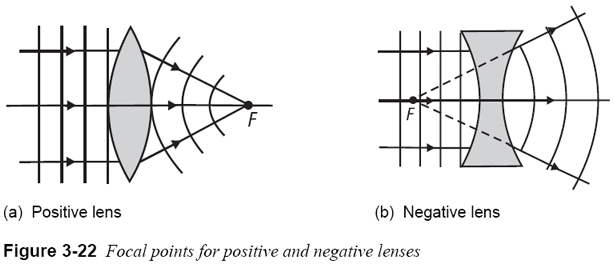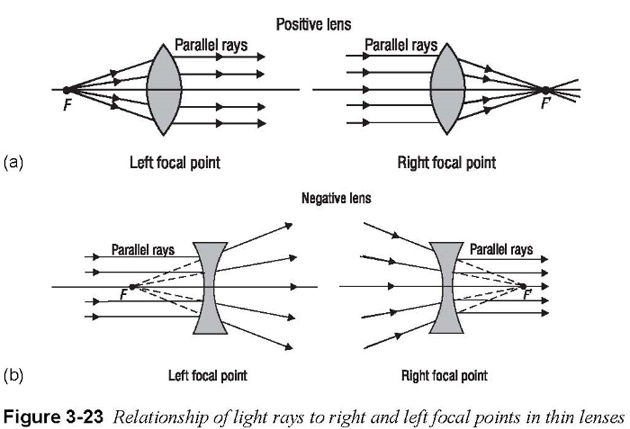2. Focal points of thin lenses. Just as for mirrors, the focal points of lenses are defined in terms of their effect on parallel light rays and plane wave fronts. Figure 3-22 shows parallel light rays and their associated plane wave fronts incident on a positive lens (Figure 3-22a) and a negative lens (Figure 3-22b). For the positive lens, refraction of the light brings it to focal point F (real image) to the right of the lens. For the negative lens, refraction of the light causes it to diverge as if it is coming from focal point F (virtual image) located to the left of the lens. Note how the plane wave fronts are changed to converging spherical wave fronts by the positive lens and to diverging spherical wave fronts by the negative lens. This occurs because light travels more slowly in the lens medium than in the surrounding air, so the thicker parts of the lens retard the light more than do the thinner parts. 
Recall that, for mirrors, there is but a single focal point for each mirror surface since light remains always on the same side of the mirror. For thin lenses, there are two focal points, symmetrically located on each side of the lens, since light can approach from either side of the lens. The sketches in Figure 3-23 indicate the role that the two focal points play, for positive lenses (Figure 3-23a) and negative lenses (Figure 3-23b). Study these figures carefully. 
Page: 12345678910111213141516171819202122232425262728293031323334353637383940
| Eyes carePhysicianBate's booksTechnologyForumLaser corre.Blues under eyesburning in the eyesanother diseasesMedical mistery Naturally eyesight correction. No laser eye surgery. Restore eyesight. Vision correction. games reviews gmbl online | |




